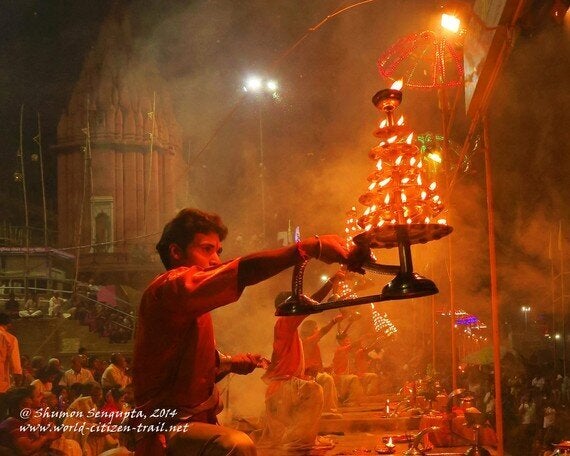
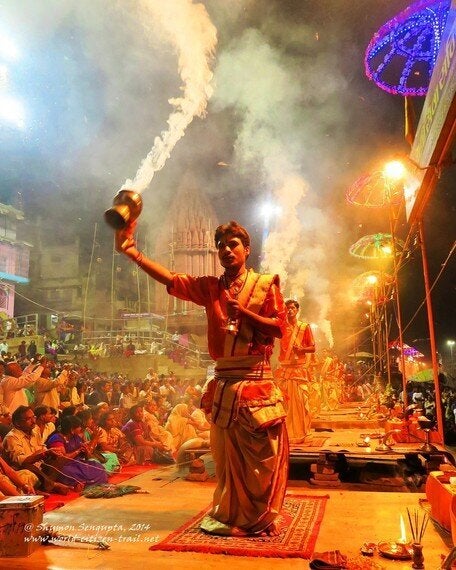
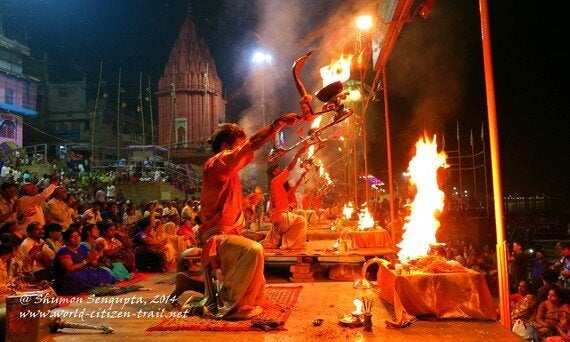
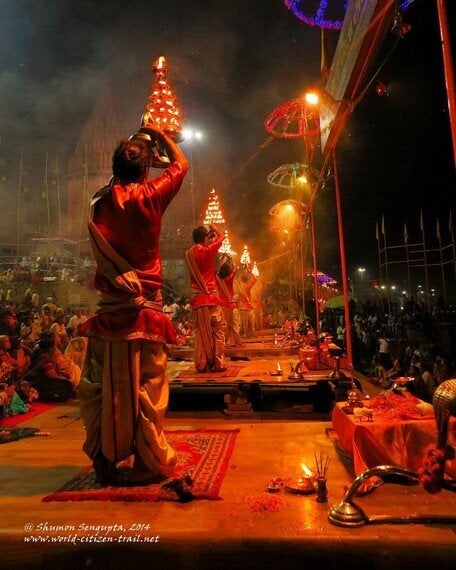
Hinduism is a religion of intricate and highly symbolic rituals. Visually, these rituals include a dynamic play of light/fire, colors, textures, hand gestures, and body postures and movements - representing an artistic and aesthetic pursuit of a very high order.
Recently, during our trip to Varanasi (or Benaras or Kashi), we witnessed the spectacular Hindu ritual called the 'Ganga Aarti' held at the banks of the River Ganges.
The city of Varanasi, as many of you may know, nestles on the banks of River Ganges in the North Indian State of Uttar Pradesh. Varanasi is one of the oldest continuously inhabited cities in the world and to give you a sense of its antiquity - it was already an ancient city during the time of the Buddha, born more than 500 years before Christ. Archaeological evidence suggests that a settlement existed as early as the 12th century BCE.
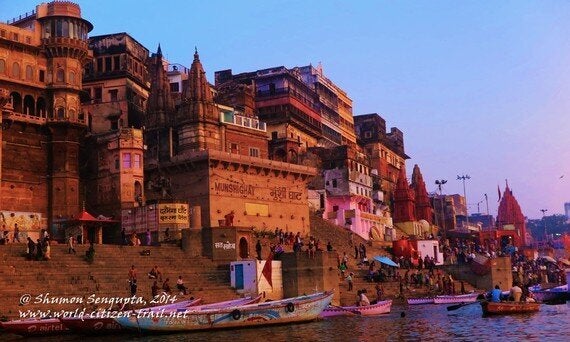
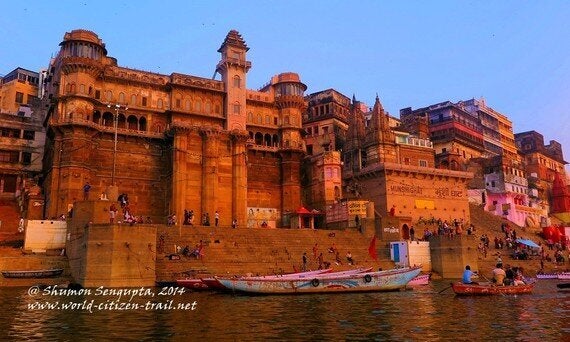
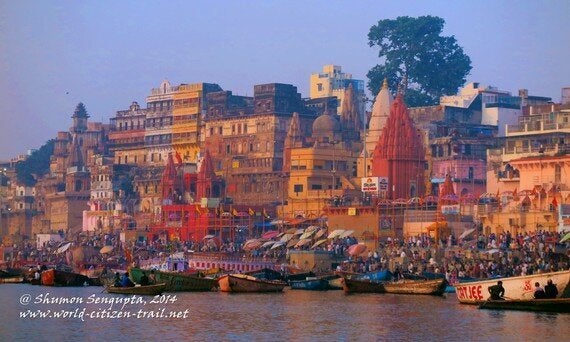
Since ancient times, Varanasi has remained the most important center of Hindu spirituality and culture and has been an important seat of Hindu intellectuals. River Ganges is considered of divine origin and hence held as deeply sacred by Hindus. While being the spiritual and cultural capital of Hindus

We saw the 'Ganga Aarti' at two places. The one held daily at the crack of dawn on the Assi Ghat (Ghat, meaning stepped embankments) and the other held daily in the evening, at the Dasashwamedh Ghat,
In short, the word Aarti (also spelt as Aarati) comes from the Sanskrit word "Aratrika" - meaning a ritual that dispels darkness. This ritual worship traces its origins back to the Vedic time (circa 2000 BCE) and holds deep symbolic value for Hindus. The various ingredients of an Aarti ritual includes water, flowers, lamps, incense, bells and various other ritual objects.
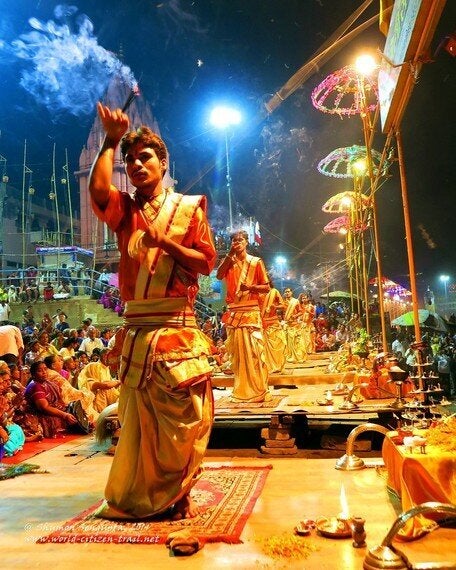
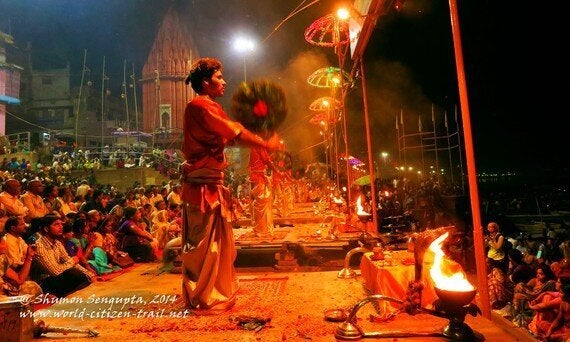

For a practicing Hindu, this ritual can potentially express a wide range of emotions including love, devotion, obeisance, gratitude or thanksgiving to a particular God or a group of Gods/Deities, and/or it can be a part of a prayer for seeking positive energy, strength and peace of mind. Very importantly, through this ritual process, the worshipper is also expected to surrender and transcend the ego.
One of the most beautiful aspects of the Aarti is that after the ritual is first dedicated to chosen Goddess / God (in four cardinal directions, indicating omnipresence of God or the transcendental entity), it is then dedicated to all observers who are also, in effect, participants in the ritual. The latter dedication stems from a fundamental Hindu belief that divinity lies within each and every human being that everyone has a part of God, within.
Given that the ritual celebrates both material and spiritual aspects of Hindu life, it is essentially celebratory, joyous and life affirming in nature.
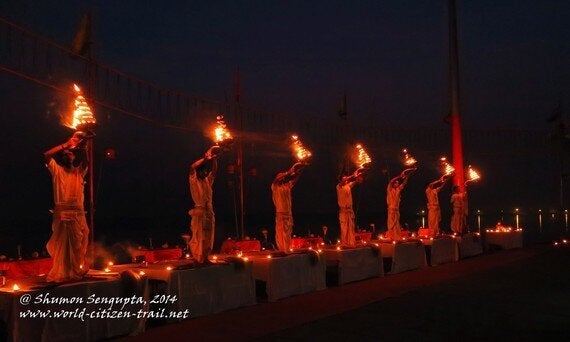
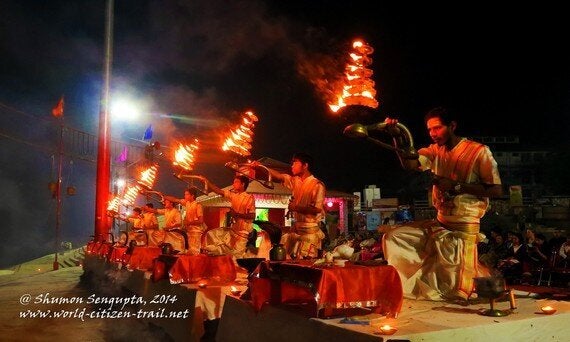
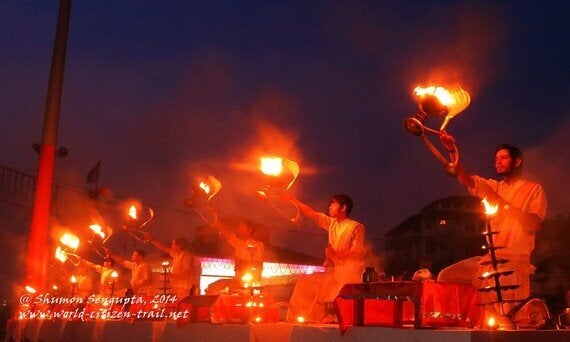
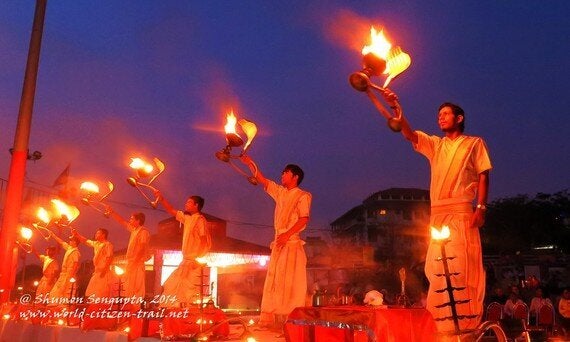
The Aarti at Assi ghat began at 4.30 in the morning and was a part of a daily morning program called "Subah-e-Banaras", which included a musical program, followed by a yoga session.
The ceremonial lamps were set ablaze while it was still dark and coupled with the burning incense, it created a sublime mood, as night quickly gave way to the stillness of dawn. There was a gentle river breeze and as the sun rose from across the river, a soft pre-dawn light spread all over. We could sense world around us slowly come alive. The morning Aarti was an awakening of the body, mind and spirit; it left us with a sense of hope, of eager anticipation.

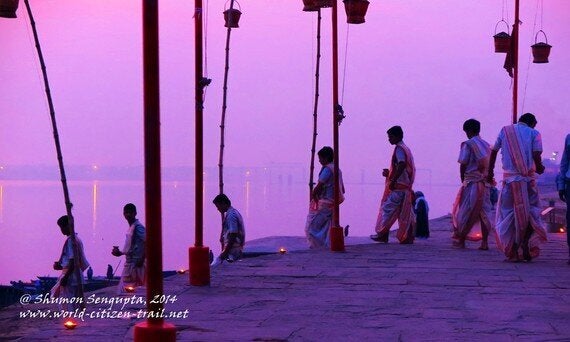
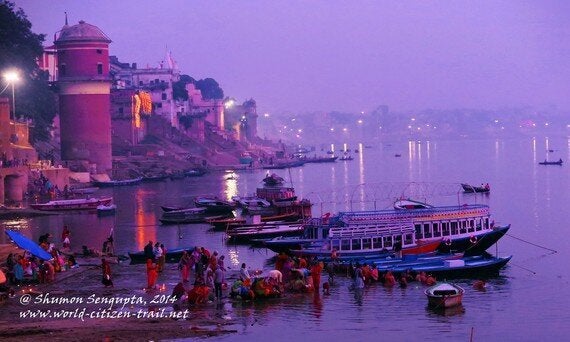

Later in the day we took a boat from Assi Ghat to attend the evening Aarti at Dasashwamedh Ghat. A group of young priests who perform this daily ritual turned out in resplendent ceremonial dress. The ritual began at 7 pm and lasted for 45 minutes.
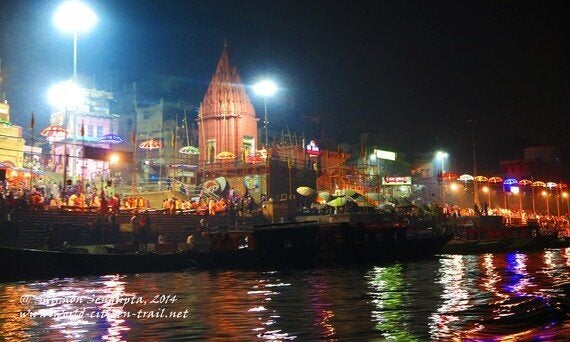
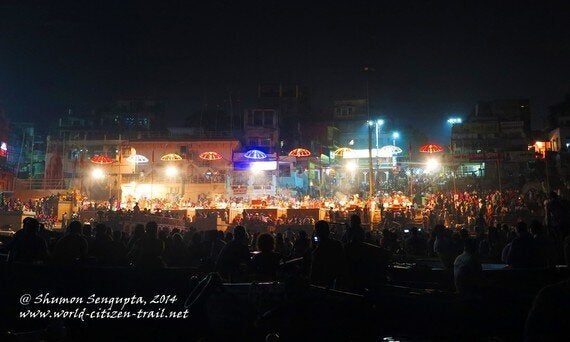
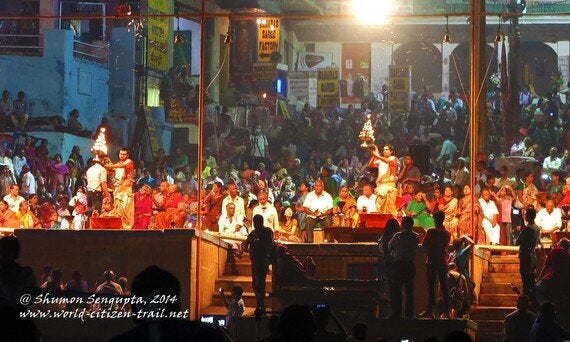
Blowing of conch shells, singing of devotional hymns and chants, and the pulsating sound of ceremonial bells, gongs and drums reverberated in the air, to the circular sway of large multi-tiered blazing oil lamps and a big brass camphor lamp, with a dramatic snake hood. The Lamps were so large that they had to be often held with both hands and the flames flared several feet high.
The redolent air, heady from the burning incense, other ceremonial lustrations ('dhoop') and flowers combined with the sights and sounds to create a magical, enchanted atmosphere.
We were mesmerized by the alchemy of color, by the lamps blazing against the darkness, the sounds and fragrances, and a sense of harmony and proportion in movement. It was a unique aesthetic experience which dispelled the sense of uncertainty and anxiety that generally comes with approaching darkness. It left us feeling a sense of peace, joy and reassurance.
Hindu rituals involve a conscious pursuit of beauty and is essentially a creative process, translated into the practice of art. In Varanasi, watching the Ganga Aarti, we realized that if Hinduism had engendered a profusion of art through rituals, art had found a potent and dynamic space for expression through this religion.
(You will find Shumon Sengupta's posts and albums from his travels around the world 'Tales from the Trails of a World Citizen')

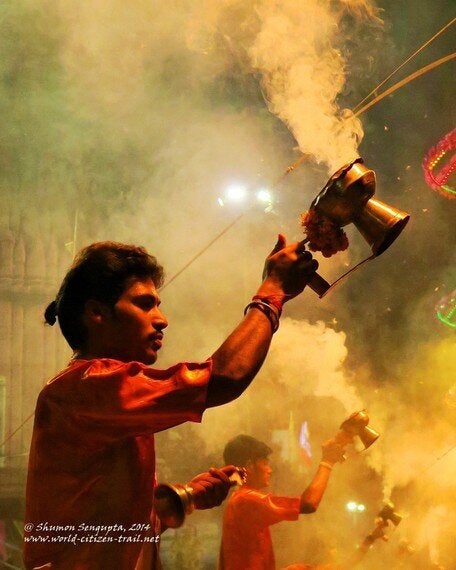
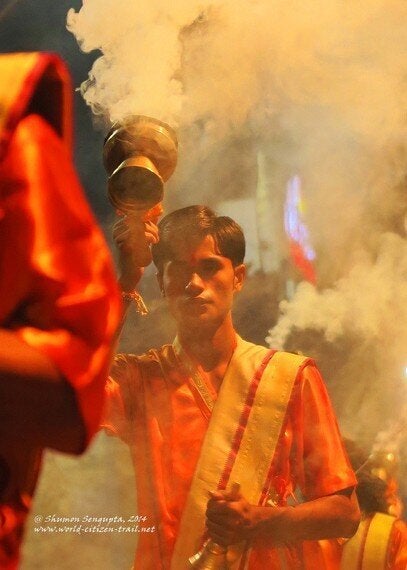
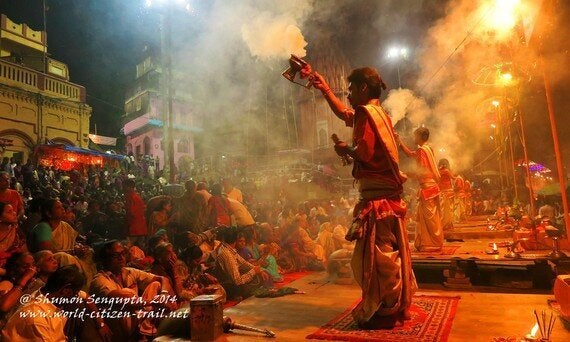
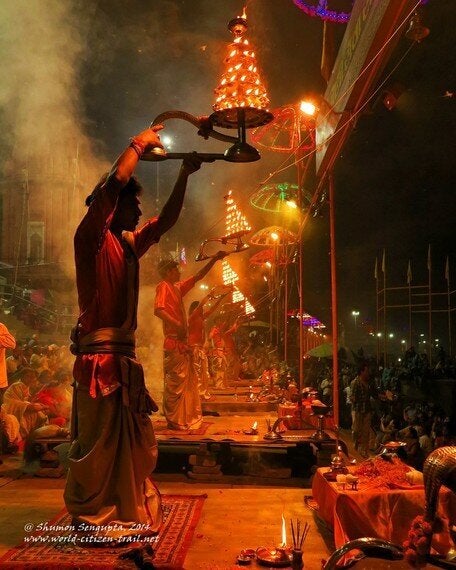
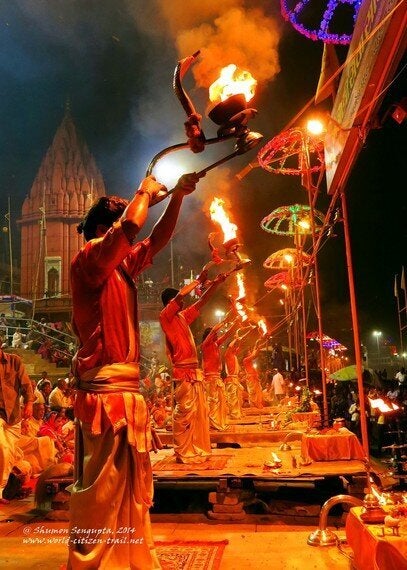
(You will find Shumon Sengupta's posts and albums from his travels around the world at 'Tales from the Trails of a World Citizen')
*************************
*********
